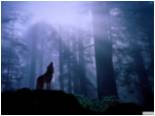 Olney Theatre has made a name for itself not only with familiar repertory but also several creative new explorations, most recently, its current world premiere of Call of the Wild, liberally adapted from Jack London’s classic works by Jon Lipsky with score by Bill Barclay. This New Play Initiative by the Olney Theatre represents the most recent iteration since its origin at Boston University, then the University of Kansas, University of Virginia, and touring workshop version by the National Players at Olney Theatre Center.
Olney Theatre has made a name for itself not only with familiar repertory but also several creative new explorations, most recently, its current world premiere of Call of the Wild, liberally adapted from Jack London’s classic works by Jon Lipsky with score by Bill Barclay. This New Play Initiative by the Olney Theatre represents the most recent iteration since its origin at Boston University, then the University of Kansas, University of Virginia, and touring workshop version by the National Players at Olney Theatre Center.
Before tonight, I couldn’t imagine how they’d pull off a musical adaptation. COTW was one of my very favorite childhood reads, although with the passage of years, I’d forgotten most of the story. The thought of it as a musical almost trivialized it in advance, but other than that, I really had no other preconception. I just guessed it would have to be something different.
Yet it mostly came back to me seeing this staged version. Cast members doubled as human and dog, which seems most appropriate given London’s probing — even as far back as 1903 — of the special understanding that develops between the two species. Given how much research and popularization have been focused on the human-animal bond in recent years, it would be even more provocative if we could commune with London today and ask him what he thinks about that bond as we suburbanized softies now experience it.
Life in the Yukon during the Gold Rush was unforgiving and harsh. The play doesn’t hide that, incorporating several dog fights provoked by both the dogs themselves and greedy, blood-lusting, power-hungry humans — “gods” from the dogs’ perspective. It took at least a couple of numbers to get used to this dark story being told through words, movement and music that uses a wide repertoire of jazz and pop styles. The compositions and choreography hint at the influence of Sweeney Todd, Age of Aquarius, Les Miz, Cats, and stepping (stomps and kicks traditionally styled among African American college fraternities and sororities), among others.
Somehow, it all seemed to fit and work. I think the glue was how well most of the cast captured so many typical dog-wolf movements — licking, sniffing, scratching, growling — combined with behaviors and imagined thoughts. Implicit for understanding the human-animal bond is an acknowledgment that even though each species uses a different kind of language, both feel common emotions toward events and each other. How they come to realize that and draw close to one another is most poignantly expressed in Act 2, when White Fang (as a she-wolf hybrid in the musical version) and Thornton overcome their initial doubts or mistrust based on prior bad experiences with other members of their respective species. (This is a part of the story that has been considerably modified from the original for the sake of the live performance.)
Some of the sound wasn’t crystal clear, resulting in occasional muffled words. But overall, this unusual adaptation gets a solid “Good Dog” from me.
Our rating: 9 kongs




